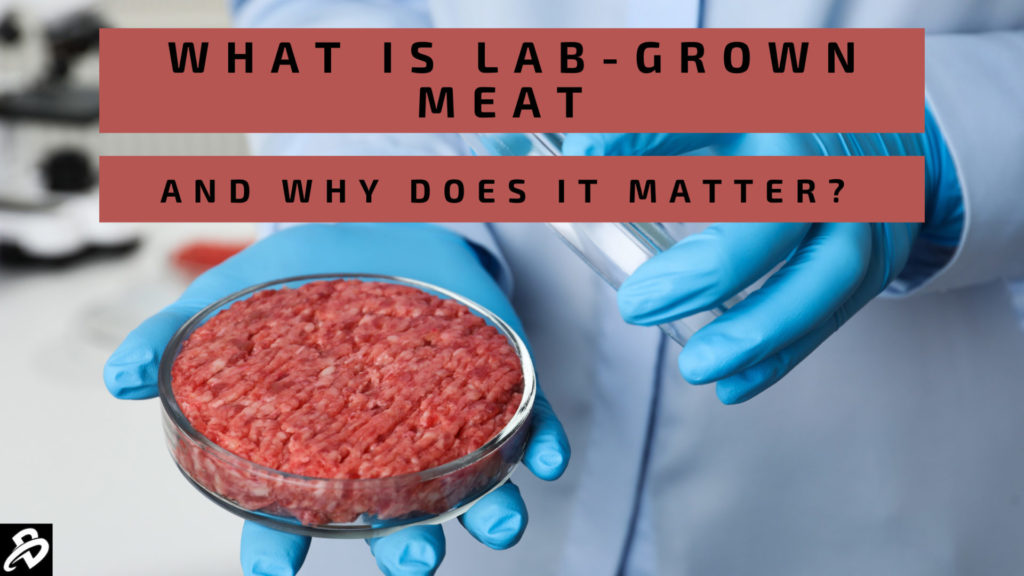The potential of lab-grown meat has captured the imagination of investors, researchers, and consumers alike. In the late 1990s, Willem van Eelen was the first applicant to file the first patent for a cultured meat manufacturing method. Although the lab-grown meat industry has only existed for about 25 years, 2020 was a turning point because a cultured chicken product developed by the company “Eat Just” made its debut on a restaurant menu in Singapore.
What is Lab-Grown Meat?
Cultured meat refers to meat created using cell culture techniques within a laboratory or manufacturing facility. It is produced by growing master cells collected from cattle, chicken, pigs, fish, lamb, and other livestock. Cultured meat is ethically produced, because livestock is not used within the manufacturing processes beyond collecting the initial cells required for cell culture.
Lab-grown meat is manufactured using the stem cells of meat-producing animals. These stem cells are then grown in bioreactors, where they are fed an oxygen-rich cell culture medium composed of basic nutrients such as amino acids, glucose, vitamins, and inorganic salts, and supplemented with proteins and other growth factors. The proliferating stem cells in the bioreactor differentiate into skeletal muscle, fat, and connective tissues that make up the meat.
The meat cells are then harvested, prepared, and packed into final products. The entire process takes about 2-8 weeks. Thus, the inputs required for the production of cultured meat include: cell lines, cell culture media, bioprocess design, scaffolding and end-product considerations.
Lab-Grown Meat as a New Category of Food
Lab-grown meat is a new category of food in which edible meat products can be created without the need for raising and slaughtering farm animals. Cultured meat is composed of the same cell types found in animal tissues, primarily muscle fibers and fat, thus recreating the sensory and nutritional profiles of conventional animal meat.
The number of startups focused on developing cultured meat (and the required cell culture media, supplements, and methods to produce them) has been rising year after year. It has reached an impressive 99 companies worldwide as of 2022, compared to only four in 2016. The industry’s commercial landscape now includes nearly a hundred startups focusing on developing cultivated meat components, services, and end-products.
Nearly 40 life science firms have publicly declared and formally launched products to supply cultured meat companies with the essential inputs they need to support cultured meat production. After initial small-scale manufacturing within a laboratory setting, a few companies have started manufacturing cultured meat at “pilot scale” (meaning, at moderate scale). Thus far, only a few market competitors have ventured into industrial-scale production of cultured meat products.
Burgeoning Growth of the Cultured Meat Market
Flow of capital into the industry steadily grew over the past five years and reached approximately $1.0 billion per year in recent years. Some of the major investments have been Cargill’s investment into Memphis Meats and Aleph Farms and investments by Tyson Foods Venture Fund into Memphis Meats and Future Meat Technologies. Also, the cultured meat industry saw its first Series B funding rounds and the first ever public-sector R&D funding in 2020 in both the United States (U.S.) and the European Union (EU).
Furthermore, the international science community is now recognizing cultured meat as a valuable research topic. The public sector has started funding cultured meat research centers and important research findings have been published within prestigious, peer-reviewed scientific journals. While research scientists have made several notable breakthroughs related to the cultured meat manufacturing, the market still needs to achieve price parity with conventional meat manufacturing and overcome bottlenecks related to the industrial-scale production of cultured meat products.
Further developments this year suggest that the industry is still in its infancy, although its trajectory will ultimately lead to price competitiveness (and potentially even advantages) over traditional, farm produced meat. Next year, we expect to witness rapid prototyping, as well as development of scalable manufacturing processes in pilot pants. By 2025, industrial-scale production is anticipated to begin.
Thus, according to conservative estimates, the cultured meat market will produce sales revenues over $200 million in 2025 and nearly $600 million by 2032. By 2040, cultured meat will control an estimated one-third (approximately 35%) of the market share across the global meat market. The global meat market is comprised of conventional meat, vegan (plant-based) meat, and cultured meat.
